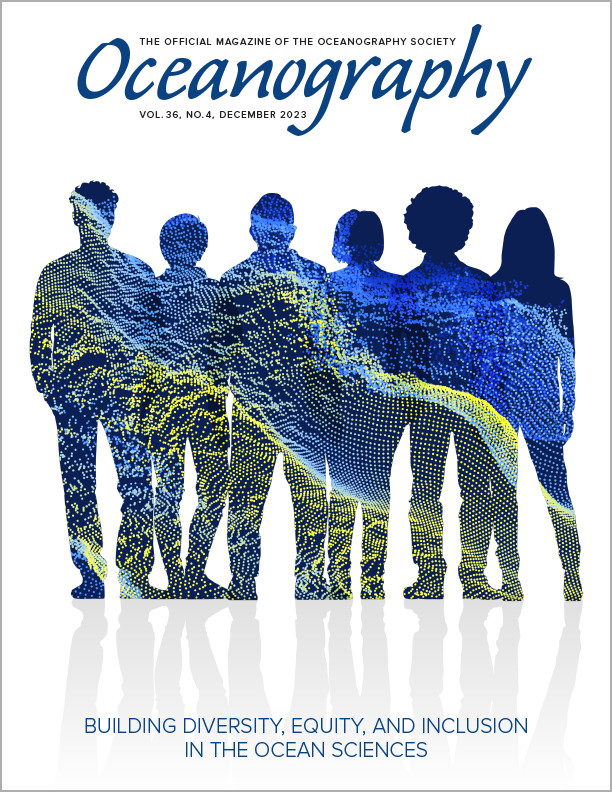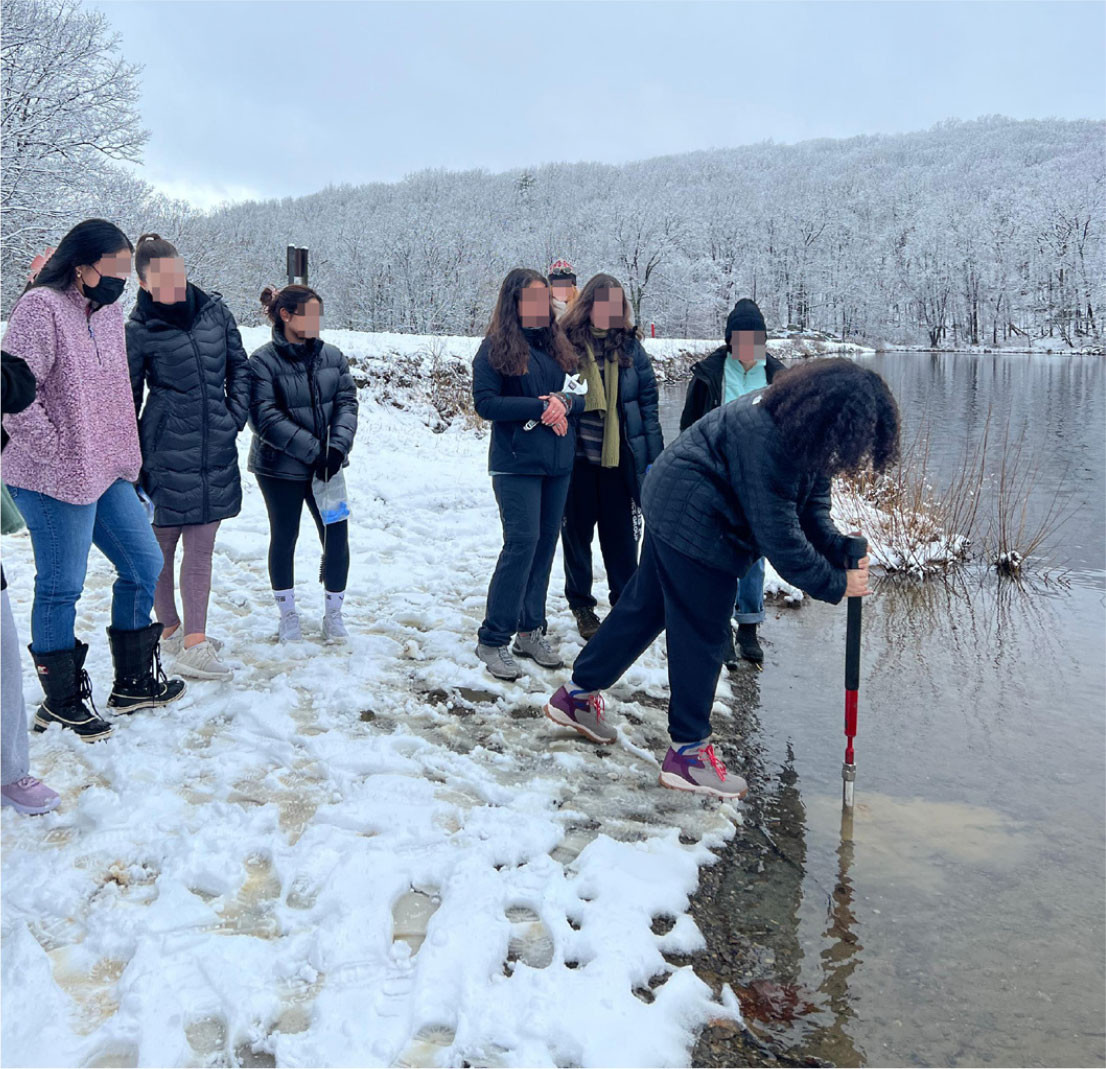Full Text
Introduction
To address the national need to diversify the geosciences, we created the cohort-based Environmental Science Pathways Scholars Program, or E(SP)2, for undergraduates in the Environmental Science Department at Barnard College who identify as Black, Indigenous, and people of color (BIPOC), first generation college students, or low income. By fostering a more inclusive community in the particularly formative stages of academic and early professional development, E(SP)2 aims to support and retain a diverse cohort of students who have developed confidence in their scientific skills and identities, and who share a passion for environmental science. E(SP)2 is modeled on the Science Pathways Scholar Program [(SP)2], an active and successful multidisciplinary opportunity at Barnard College.
High school seniors are recruited for E(SP)2 during the college admission process, and rising college sophomores are recruited from introductory courses. Our first and second cohorts totaled seven students each, both with four rising first years and three rising sophomores. We had a 30%–40% acceptance rate on offers made to rising first years, and all rising sophomores accepted. The rising sophomores were chosen from an applicant pool of five to seven eligible candidates per year. Thus far, the program has retained all scholars.
Program Structure
E(SP)2 is a combination of coursework and funded summer opportunities (Figure 1). Peer mentorship and personal student-faculty interaction infuse each aspect of E(SP)2, creating a tight-knit inclusive environment that allows scholars to gain their footing as they embark on their undergraduate science journeys.
|
|
Prior to their first semester, scholars participate in a summer bridge program where we focus on cohort building and introduce incoming students to college life and campus resources. Next, scholars register for a Journal Club course that introduces them to foundational skills, including how to read a scientific paper and draft a figure, and they meet with specialists on resume writing and fellowship applications. We also bring in senior environmental science majors to share their experiences at Barnard.
During their second semester in E(SP)2, scholars participated in a three-part spring break field trip at Black Rock Forest (BRF, Cornwall, NY), a research forest with field station (Figure 2). In addition, scholars visited the Lamont-Doherty Earth Observatory where they analyzed the soil samples they collected at BRF. They also learned about sediment cores collected by scientific ocean drilling and used microscopes to practice picking foraminifera. Scholars then took part in the Barnard-wide wastewater sampling program, where they learned about the relationship between humans, sewage treatment, and New York City’s urban ocean. The goal of the trip was to provide an immersive experience that connected classroom learning to application and nature. Field experiences are often associated with improved STEM-major retention through the creation of strong mentor-student relationships and peer networks that can provide lasting support (Crowe and Brakke, 2008; Dundes and Marx, 2006). The final curricular experience occurs during the second year in the program when scholars participate in a workshop on science communication co-directed by our community partner BioBus (Harlem, NYC) and taught through the lens of a local environmental justice issue—lead contamination in New York City soils. This includes a hands-on community outreach event during which scholars teach about lead exposure risk and measure soil samples.
|
|
These curricular components are amplified by funded summer research. We help our scholars seek out research mentors by making introductions, helping them draft emails, and prepping them for interviews or reviewing their applications. Scholars pursue their personal passions, including ocean sciences subspecialties such as paleoceanography. Multi-year, intensive research experiences that provide an inclusive community of mentors and peers allow students to gain confidence in their scientific skills, and they begin to view themselves as scientists (Linn et al., 2015). We also financially support scholars who opt to substitute a summer of research for an internship in an environmental science-related field. These summer experiences are the keystone component of E(SP)2, as scholars apply the skills and knowledge they cultivated throughout the year. Scholars complete E(SP)2 in two years, either as sophomores or juniors, depending on their entry point. Program alumnae will be recruited as mentors and guest speakers.
We evaluate E(SP)2 and student science identity through short attitudinal surveys following each program component as well as observation and interviews conducted by the Barnard Empirical Reasoning Center (Barnard College IRB-[2223-0515-014]). Participating scholars indicated they highly value the mentorship and community offered by E(SP)2 and desire research experience. Longitudinal assessment of the student experience shows an increase in their confidence identifying as a scientist, noting that the spring break field trip played a role in this evolution. Our evaluation plan will allow us to actively improve E(SP)2.
Recommendations
While E(SP)2 is in its infancy, as our first cohort began August 2022, we have learned a great deal thus far in the following areas:
- Leverage existing relationships. The success of E(SP)2 is in no small part due to collaboration with existing successful programs and college offices. We modified the structure of (SP)2 with discipline-specific components, which facilitated institutional support because we did not create something completely novel. We found it critical to leverage already existing expertise across the college; the admissions office streamlined the recruitment process, and the grants and sponsored research office has helped us keep the program running smoothly.
- Peer mentors. It is extremely beneficial to pair E(SP)2 scholars with college seniors, recent graduates, and graduate students from the same populations to provide support, education, and mentorship. For example, our department program coordinator, who is a recent Barnard Environmental Science and (SP)2 alumna, regularly interacts with our scholars. We also worked closely with two Barnard alumnae who are now graduate students to provide assistance during our field trip.
- Program adaptation. E(SP)2 can be adapted by other institutions of different sizes and degrees of financial/personnel support. Regardless, we recommend program size stay small (~6–10 students/cohort) and prioritize two funded summer opportunities for each student scholar. This allows students to pursue new opportunities as their interests evolve. If this is not possible, create an application-writing seminar for external summer programs. Ocean sciences could be more closely targeted by altering the themes of the spring break field trip or the science communication workshop. Finally, prioritize program leadership whose backgrounds reflect those of the participants and have a history of successful mentorship.
- Support for program leaders. It is critical that program personnel have a network to rely on. The National Science Foundation Pathways into the Earth, Ocean, Polar and Atmospheric & Geospace Sciences (GEOPAths) program has a thriving PI community, and through regular meetings we are able to discuss challenges and brainstorm remedies. This model can be adapted by connecting with other programs at one’s own or nearby institutions.
We believe that E(SP)2 will be influential in our students’ development, providing a comfortable space to explore their relationship to science. The cultivation of strong peer-peer and student-faculty relationships coupled with the flexibility to pursue immersive summer experiences is foundational to the success of our scholars. We are excited to continue this program and permanently weave its structure into our department.



